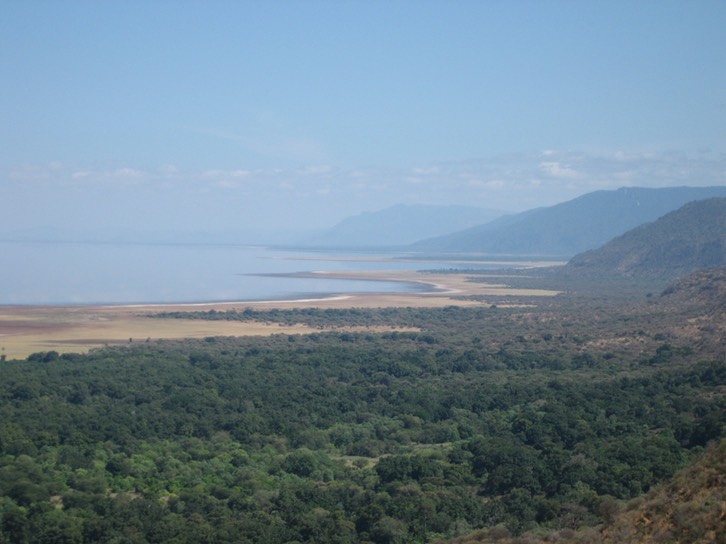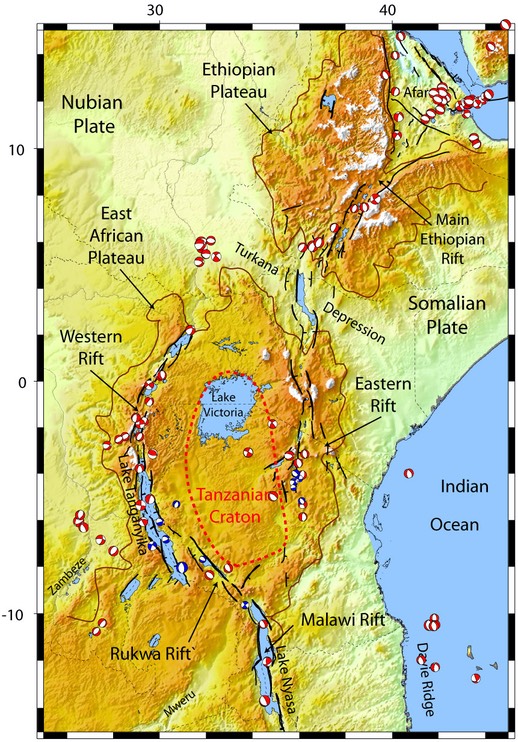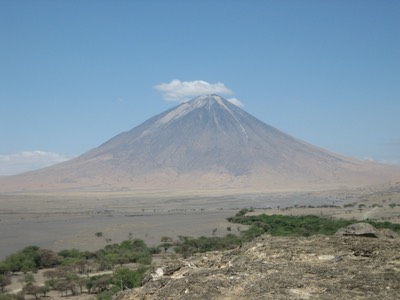Rifting of continental lithosphere is a fundamental process that controls the growth and evolution of continents and the birth of ocean basins. It plays a crucial economical role by controlling the formation of hydrocarbon and thermal resources in rift basins and their successfully rifted counterparts, passive continental margins. Continental rifting involves the entire mantle-lithosphere system through heat transfer and magmatism, and possibly through the mechanical effect of mantle flow on lithospheric deformation. Continental rifts are therefore a prime setting for the study of coupling and exchanges between the deeper and shallower parts of our planet. The role of the mantle in the dynamics of rifting is a long debated topic, as illustrated in the “active" versus “passive" rifting rift classification. For the former, rifting occurs as a result of dynamic stresses caused by a buoyant mantle. For the latter rifting occurs as a result of far-field lithospheric stresses caused by plate motions, while mantle upwelling is only a consequence of lithospheric stretching.

The East African Rift (EAR), the ~5000-km long divergent boundary between the Nubian and Somalian plates, is a type-locale for rifting and continental breakup. Although the EAR is often cited as a modern archetype for continental rifting and continental breakup, it remains one of the least understood of all major plate boundaries. The large-scale forcings responsible for present-day rifting in the EAR therefore remain debated. For some, rifting owes primarily to basal shear tractions exerted by divergent mantle flow under Africa — a common feature visible in a number of mantle circulation models. For other, rifting owes to tensional deviatoric stresses arising from lateral variations of gravitational potential energy (GPE) in the African lithosphere. These GPE variations, in turn, result from the high topography of eastern Africa, thought to be dynamically supported by the positive thermal buoyancy of the "African Superplume", a seismically-imaged low shear-wave anomaly extending from the core-mantle boundary to at least the mid-mantle.

Our research aims at improving our understanding of the dynamics of continental rifting with a particular emphasis on the role of viscous coupling between asthenospheric flow and lithospheric deformation. Our work addresses some of the fundamental questions of continental plate tectonics: Are extensional strains broadly distributed or initially localised to narrow zones? Do interactions between mantle flow fields and cratonic keels influence the localisation and orientation of strain within continental plates? In addition to these global tectonic issues, our work addresses questions specific to East Africa: What is the origin of the magma-poor Western rift system? What are the kinematics of linkage between the Western and Eastern rift systems?
Our group has been investigating the kinematics and dynamics of continental rifting in East Africa using GPS geodesy and numerical deformation models. We have shown that present-day data (a GPS+DORIS geodetic solution and earthquake slip vectors) support a kinematic model that includes three subplates (Victoria, Rovuma, and Lwandle) between Nubia and Somalia. Rates of relative motion along the EARS increase from south to north, with maximum opening rates of 6~mm/yr at the Afar triple junction. This is in remarkable agreement with the past-3-Myr average motion derived from paleomagnetic observations. We use numerical models of the global mantle-plates coupled system to test the role of present-day mantle-flow in Nubia-Somalia plate divergence across the EARS. We recently found that he scenario yielding the best-fit to geodetic observations is one where torques associated with gradients of gravitational potential energy stored in the African highlands are resisted by weak continental faults and mantle basal drag. These results suggest that shear tractions from diverging mantle flow play a minor role in present-day Nubia-Somalia divergence.
